The minor stumble.
A combination of linguistic misunderstanding and my absentmindedness prompted an odd start to the day. Without its own parking, the hotel in Cascais has an arrangement allowing guests to park in the lot owned by the adjacent marina. The hotel issues a magnetic striped card that guests can use for access and egress but, like any gate controlled lot, a similar card is issued at the gate when you first enter. I thought the hotel would simply charge my credit card the lot’s daily rate. This wasn’t the case. Apparently, I didn’t grasp the clerk’s explanation that I’d need to use both cards to exit the lot for the rate to be calculated. That’s the linguistic misunderstanding.
The absentminded element arose at checkout when the clerk asked me for the card they’d issued the previous day. I didn’t have it and, after a search of my person and my room failed to turn it up, concluded that I’d thrown it away. This prompted a series of machinations involving both hotel and parking security to allow my exit. As it turned out, I’d simply left the card in the car and had I gone to the car first, we could have avoided all the hubbub. Since it all worked out in the end, I considered it a minor stumble.
Districts, municipalities, cities, and a nearly unnecessary detour.
I need to provide you a quick look at Portugal’s system of political organization because of another misunderstanding on my part: The country has 18 districts on the mainland and two autonomous regions (Madeira and Azores) off it. These 18 districts are further divided into municipalities. Viseu in the north central part of the country has the most municipalities with 24 and Viana do Castelo in the extreme northwest the fewest with 10. According to Wikipedia, municipalities
are usually named for their biggest city, or at least, their historically most important city or town. However, the municipality is not synonymous with the city (or urban centre) and can include various towns or cities. In Portugal, cities/towns are a social distinction based on population size and associated services and have no legal representation in law or constitution.
One of the suggestions in the road book Portugal Trails provided was a stop at Aljezur. As it happens, Aljezur is both a city and a municipality in the Faro district. Without understanding this difference, I programmed the GPS to take me to the center of the town of Aljezur – a place I could have avoided. I think the intent of the guidebook was to have me experience at least one of the beautiful beaches found in the municipality.
After what amounted to little more than a glance and concluding there was nothing of interest in the town I proceeded on to Praia da Arrifana
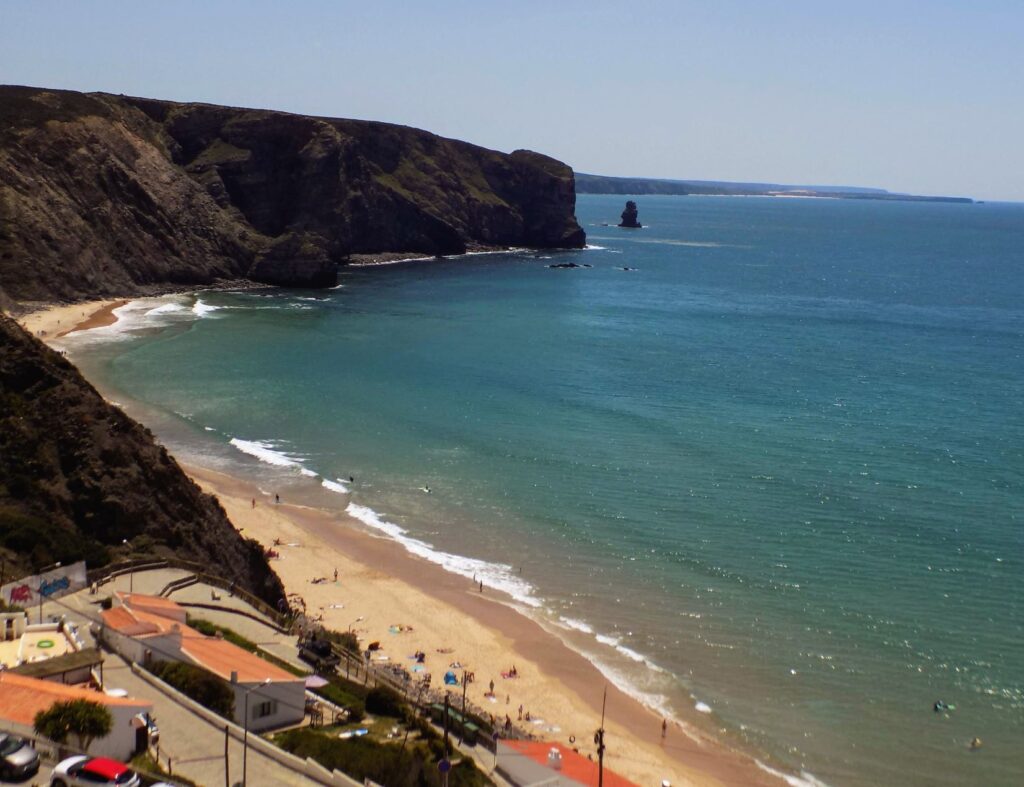
just one of a number of gloriously beautiful beaches on Portugal’s west coast. As you can see from the cliffs and the angle of the photo it’s a rather precipitous drop to the beach itself which is another characteristic of the Algarve and, to a lesser extent, the beaches of the Alentejo.
(Speaking of the Algarve, Alentejo, and Aljezur, these are among the many place names in Portugal that still reflect the centuries long Moorish rule in Iberia. You’ll see this not only in place names that begin with ‘Al’ but also ‘Ben’ and ‘Ode.’ Algarve likely derives from the Arabic algharb meaning ‘the west’ – as Portugal marked the western extent of the Moorish Empire.)
It was time for a late lunch and fortunately, a bit more than halfway down the hill sat the Restaurante da Praia. (Walking down the path, I was amused to pass small groups of people speaking English to one another but each with a different accent even when they were together as a group. It reinforced the ubiquity of my native tongue.) Although it was crowded, its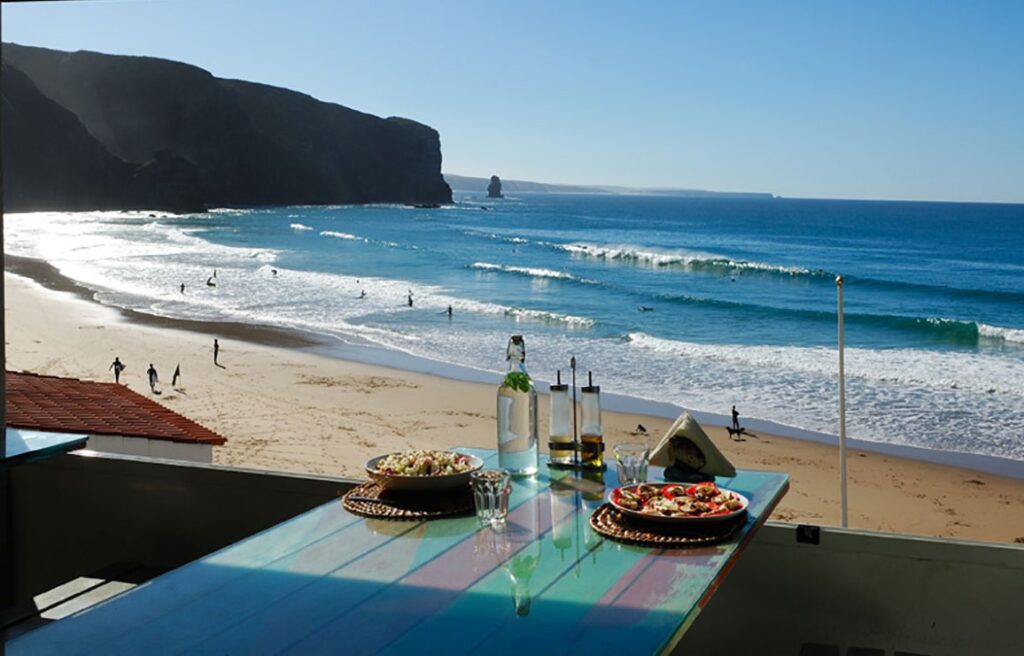
communal tables (Thanks to the folks who stepped out of the way to let me snap this photo!) allowed me to quickly find a seat where I took my time savoring a Poke bowl with tuna, cucumbers, beets, carrots, and papaya that I didn’t find spicy, though it was described as such on the menu, my usual Sagres (pronounced SAH-gresh) beer, and the lovely beach view before setting off to
Sagres.
First, let’s not confuse the town of Sagres
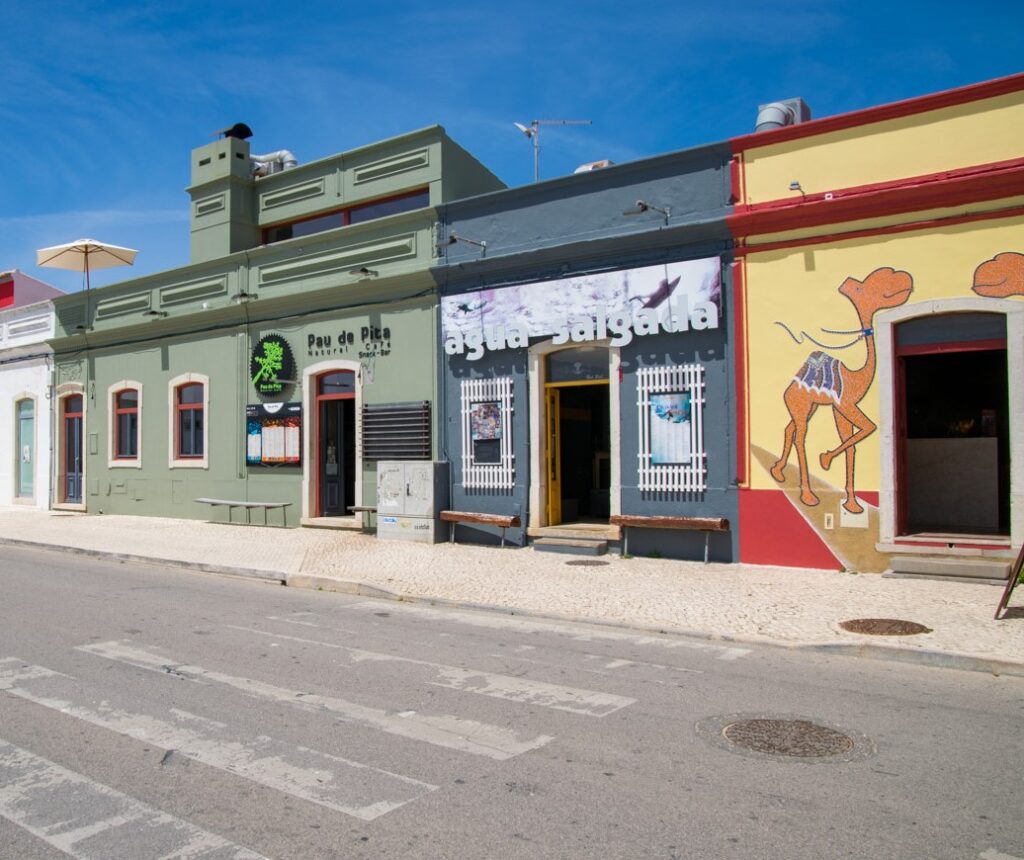
with the beer I’ve been drinking (and will continue to drink for the duration of my stay in Portugal).
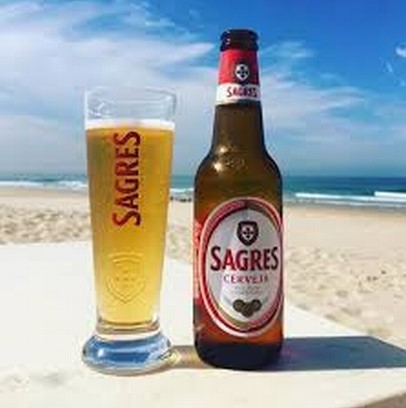
[From everybodylovesportugal.com.]
The beer was born in 1940. The town was officially established in 1519. The brewery that produces Sagres remained in exclusively Portuguese hands for more than 65 years. The Scottish and Newcastle group acquired full ownership of the brewery in 2003 and it, in turn, was acquired by Heineken in 2008. The civil parish of Sagres remains entirely Portuguese.
Sagres and the nearby Cabo de São Vincente (Cape of Saint Vincent) are closely associated with Prince Henry the Navigator who spent much of his life there and is said by some to have established a school of navigation on the cape. (The veracity of this claim is open to question. The first written citation appears in the 17th century nearly 200 years after Prince Henry’s death in 1460. There’s also considerable evidence that Lagos and Lisbon were the main ports of departure for what the Portuguese long-called the Voyages of Discovery of the 15th and 16th centuries. On the cape, nearly all of the existing buildings fell into ruin after the great earthquake of 1755 making possible evidence of the school scarce.)
Likely because it’s the southwestern most point of continental Europe, people of a spiritual mindset have long been drawn to this cape regardless of their religious beliefs. The presence of a large number of freestanding menhirs (though the Menhir do Padrão near Vila do Bispo is the only one still upright) points to the ancient spiritual attachment. The Greeks called it Ophiussa (Land of Serpents) and built a temple to Heracles there. The Romans called it Promontorium Sacrum (Holy Promontory), and Catholics believe that the remains of São Vincente (Saint Vincent of Saragossa) came ashore on the cape that bears his name.
Here’s one last fun fact about Cabo de São Vincente, according to this article from MIT Technology Review, the longest straight line path over land has one end near Jinjiang, Fujian, in China and the other near Sagres in Portugal. Mongolia, Kazakhstan, and Russia are just three of the 15 countries this route passes through on its 11,241.1 kilometer journey. So, in a way, the ancients who considered this the end of the world were right.
The major tumble.
After exploring the town a bit, I stopped for dinner at The Hangout where I managed to find a tasty sardine salad on their otherwise beef centric menu. The service was friendly and accommodating and eating my second vegetable centered meal of the day meant that I’d probably consumed more vegetables on this Friday alone than I had collectively on the trip to this point.
Because of its location at the southwestern tip of Europe, people still flock to Cabo de São Vincente at dusk and I was among the crowd there on this particular Friday night. After a brief trip to the captivating A Voz do Mar installation, I approached the lighthouse
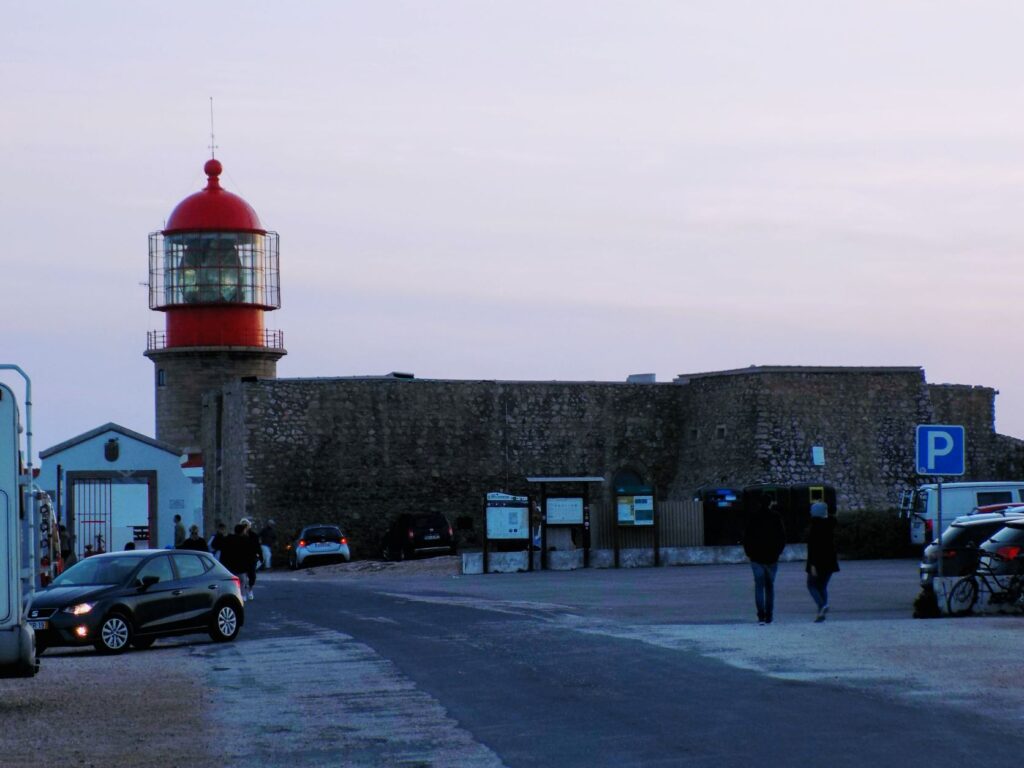
which was built in 1846 over the ruins of a Franciscan convent. It’s 24 meters high and light from its pair of 1000 watt lamps is visible for 60 kilometers.
Then, moving too quickly across the uneven surface,
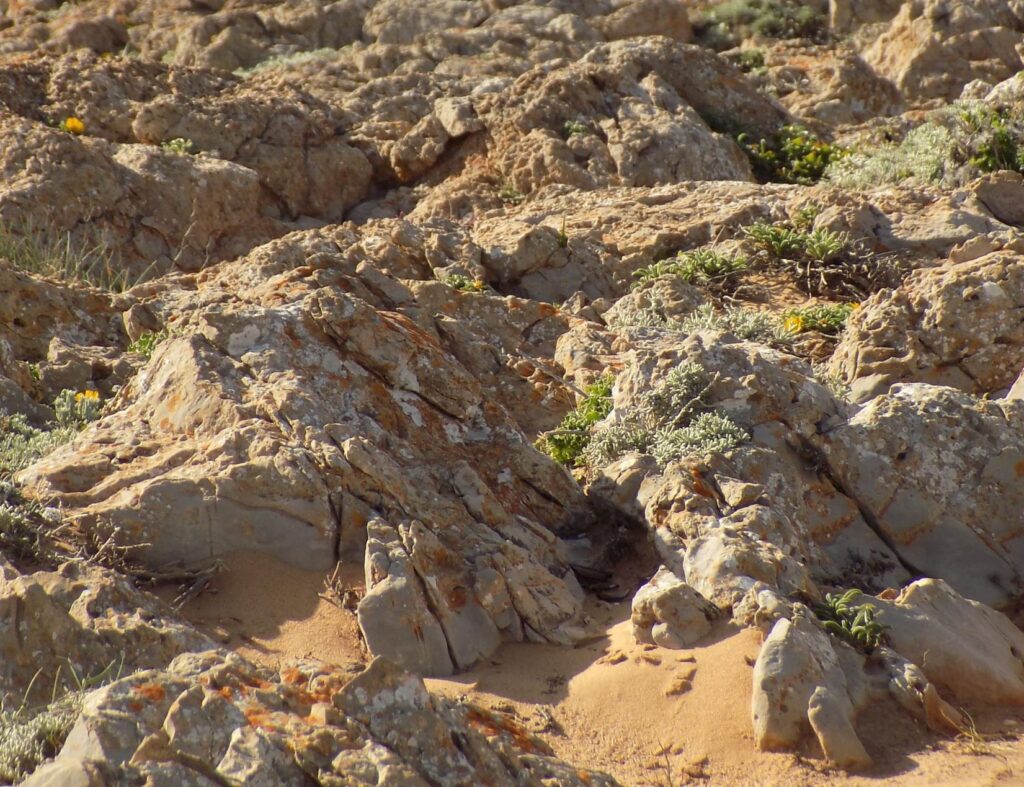
I tripped and bruised my knee and shin – not severely enough to cause any major disruption of my plans but enough to slow my walking pace for then next few days. However, as I fell, my phone flew out of my pocket and landed in just the right way to crack the glass in several places. Fortunately, it continued to function.
Like the rest of the assembled, I was hoping to see a sunset that looked something like this:.
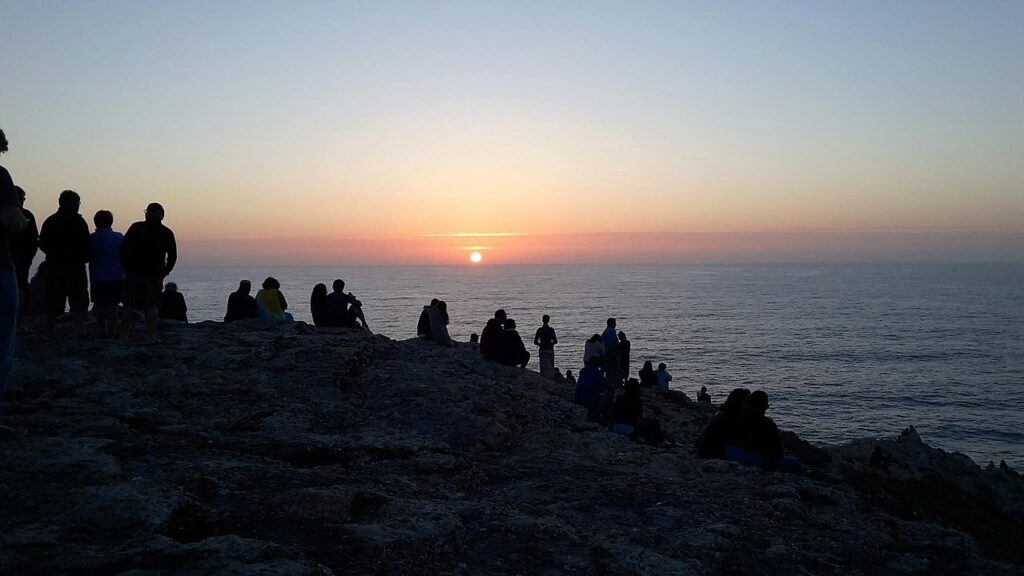
Sagres by sunset
[Photo from Wikimedia Commons By JHilario – Own work, CC BY-SA 4.0.]
and that would provide a positive end to a day that had its share of less than stellar moments but what I saw was this –
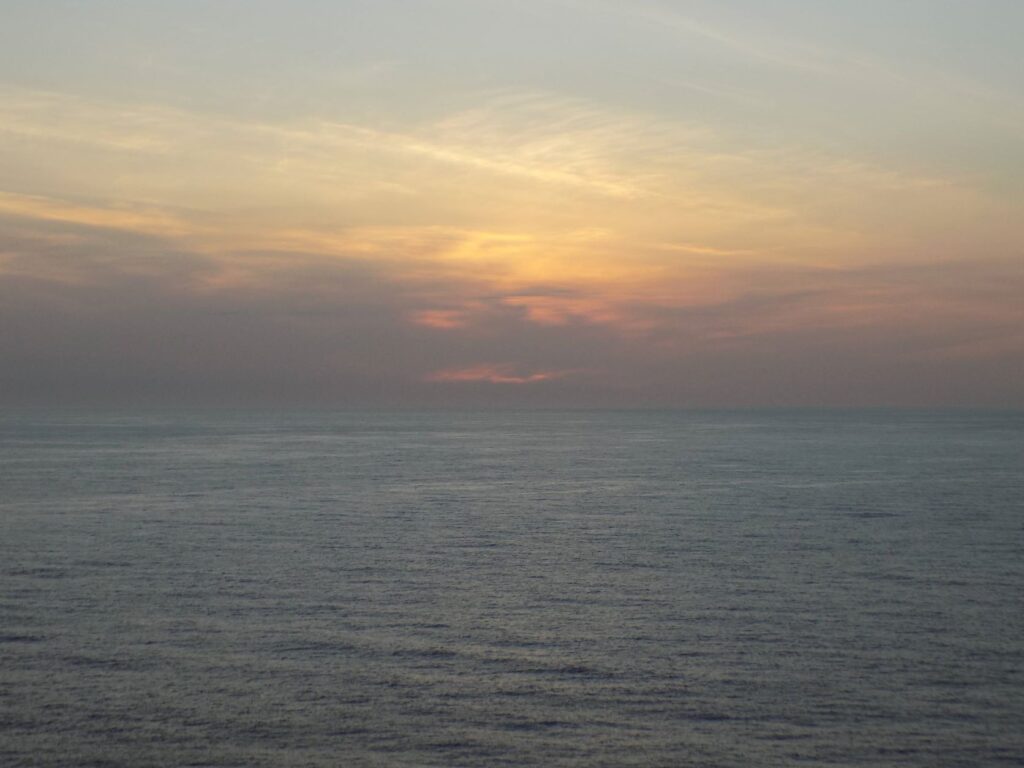
which was nice enough but far from one that could prompt a reverie of a hissing sun dipping into the sea. The rest of my photos from the day are here.
Closing notes.
In the first post about this journey I speculated that you might see the word disappointing appear with unusual frequency and it makes its first appearance here though it is only a minor one. Although hopeful, I had few expectations for Sagres as a possible retirement destination before I arrived. While I found the town charming and a little funky, it also felt rather isolated. For this reason, I moved it – along with Peniche – to the no side of the ledger.